Building Bikes in Asia - An Inside Look
Could you start a bike company?
Maybe you’ve asked yourself that question. Because….well, why not? It’s a global economy out there after all. Look at the mountain bikes at your local bike shop. Chances are the names on the down tubes do not match the names of the companies that actually made all those frames. Bike companies that physically build their own bikes are few and far between these days. If they can get someone else to build bikes for them, why can’t you?
Which brings us back to the original question: What does it take to start a bike brand? Is it as simple as showing up in Asia with a suitcase of cash and a sketch of your dream bike on the back of a napkin?
That’s what I wanted to know. So we went to Taiwan to find out first hand.
This video isn’t a pitch for (or against) building bikes in Asia. There are valid reasons to support domestic bike builders and if you are a savvy machinist/welder intent on building your own bikes, hats off to you and best of luck.
The bulk of new bike brands, however, are not started by people who are handy with a torch or lathe. Most new brands are the result of an enterprising soul flying to Asia and leveraging the massive bike-building infrastructure in those countries. It made sense for us to follow their path.
A Simple Plan
But would anyone actually talk to us? That was the big question. I’ve spent a couple years trying to line up this video and story. Years. Until now, no bike manufacturer or factory had been willing to open its doors to me. Not a big surprise, really.
We’re all grown-ups. We all know that a sticker that reads “Designed in California” generally means “Made Somewhere that Sure Ain’t California”. What’s more, most of us have been riding the shit out of stellar Taiwanese and Chinese frames for decades now. We should be long past the point where “Made in Taiwan” is tossed around as an insult. Nevertheless, some riders sneer when the conversation turns to where most bikes are actually built. I’ll leave it to you to plumb the depths of why that’s true.
Perhaps because of the lingering stigma, a lot of companies would really rather not talk about where their bikes are actually welded or formed. It’s sort of like talking to your parents about their sex life. Clearly, your parents must have, well, you know… You’re sitting here reading this, so it only follows that Mom and Dad didn’t spend every evening collecting stamps, but who wants to broach the subject of getting all slappy and bothered with ma and pa? People get awkward around the truth. For whatever reason, Chris Cocalis is not one of those people.
I’d called up several companies and asked if they would show us around and get us in the front door of a factory where their frames are made. Lots of awkward silence ensued. When I bounced the idea of Cocalis, the owner of Pivot Cycles, he simply said, “Sure”. Maybe he didn’t understand what I was asking of him. So I asked again. Now he sounded sort of confused—didn’t he just say “Sure” five seconds ago?
Well, okay then.
Here was the game plan: Fly into Taipei, catch a taxi to Taichung, get the grand tour at the factory that builds Pivot’s aluminum bikes. Maybe hit a couple more factories. Then catch the train back to Taipei, just in time to work the annual Taipei trade show. In our spare time, we’d try to interview some of the hundreds of Taiwanese and Chinese manufacturers who would be showing off their wares at that trade show. We doubted anyone would talk to us, but it was worth a shot.
So there we were, on a Friday night, trudging through Vancouver International Airport, bleary-eyed and sorely disappointed to find that the airport “brew pub” would not serve beer at 11:45 in the evening. Really? How do they expect you to properly anesthetize yourself? Don’t they know that you will, without fail, spend the next 14 hours cuddling against your will with a tubercular, geriatric who will commence coughing up bio-hazards on your shoulder the moment the jet leave the tarmac?
A beer. Just a little something to dull the terror. Is that really too much to ask for. Apparently, yes.
Yay, journalism. Speaking of which….
WHERE BIKES
ARE BORN
The vast majority of bikes built today roll out of either China or Taiwan. And the word “vast” hardly does reality justice here. Consider the situation in the United States. The National Bicycle Dealers Association reports that, in 2014, more than 99 percent or 17.8 million bicycles were imported into the country, primarily from China and Taiwan. Bicycle production in the United States during the same year? Just 200,000 bikes or, you guessed it, one measly percent. Europe is no different. In fact the continent imports more than twice as many bikes from China and Taiwan than America.
There was a time, of course, when Asia wasn’t a bike-building powerhouse. When Frank Bowden took over Raleigh Bicycles in 1889, for instance, he purchased a frame-building workshop in Nottingham, England, manned by half a dozen workers. For nearly a century, Raleigh continued to crank models out of their Nottingham factory. America had its Raleigh doppelganger in the form of Schwinn. Generations of Americans grew up riding Excelsiors, Varsitys and Sting-Rays that were welded right there in Chicago.
It was a build-local-buy-local kind of world—the world over. Every nation was home to dozens of bike brands that designed, built and sold bikes on their own home turf. That was the norm until the 1970s.
Beginning in the early ‘70s, growing numbers of North American and European brands sought out Japanese manufacturers to weld their frames for them. You could argue, in fact, that the whole reason mountain biking took off in the early `80s was because so many fledgling brands were able to turn to Japan to quickly mass produce the new style of bikes.
Tom Ritchey, Joe Breeze, Charlie Cunningham, Richard Cunningham and other pioneering framebuilders could only fabricate so many frames in their garages. On their own, they would never have been able to supply the sudden, international explosion in demand for fat-tire bikes. And so Specialized, Ross, Gary Fisher, Mongoose, Schwinn and countless other brands sent their designs to Japan where they were turned into finished bicycles by the likes of Bridgestone and Toyo.
Japanese framebuilders, however, were soon displaced by Taiwanese factories. Around 1987, the bottom dropped out of the US dollar. Suddenly, slapping a “Made In Japan” sticker on the seat-tube had become a cost-prohibitive proposition. Manufacturing quickly moved to Taiwan, where the labor was far less expensive and the exchange rate more favorable. Wages, however, eventually rose in Taiwan. By the early 2000s the bulk of bicycle manufacturing was pulling up stakes and moving again, this time to China, where worker compensation was (and still is) lower still.
Today, the bulk of bikes are still built in China. In 2013, China exported 56.22 million bikes. Taiwan, by comparison, exported 3.8 million bikes the same year. Those lopsided numbers are a bit misleading, however if you are considering where to start looking for a factory partner.
Taiwan is still the primary producer of the highest-end aluminum frames. Taiwan can’t compete with the sheer quantity of bikes that China produces, but the small island still has an edge on quality—at least when it comes to alloy frames. The average value (in US dollars) of bikes exported from Taiwan is about eight times that of the average for Chinese-built bikes. All those $199 bikes you see big, chain stores, such as Wal-Mart? Made in China.
China, interestingly, is also home to much of the carbon frame manufacturing that goes on these days. Part of what makes carbon frames and components so expensive is the high labor costs. There’s currently very little automation at play in composite manufacturing. You’re paying people to very carefully lay up those carbon plies. This is why you’ll find the majority of composite frame manufacturers taking advantage of China’s lower wages.
If I’ve painted this up as a China versus Taiwan battle for profits, it’s worth noting that the truth is murkier than that. Many of the factories in China are operated by Taiwanese owners. The Chinese government gave Taiwanese manufacturers generous incentives to open those factories on the mainland.
It gets complicated.
Which is why we took the simple route and boarded the flight to Taiwan. Cue the cuddling and phlegm.
The Bicycle
Kingdom
Fifteen hours later we were packed in a stunted mini-van of sorts, barreling down the freeway. We are completely at the mercy of fate and the rheumy-eyed, shaky-handed expertise of our driver who is hell bent on channeling his inner Stig. The van weaves in and out of traffic at unholy speeds. Never does his foot touch the brake pedal. That’d be some kind of admission of defeat. The turn signal? Who knows why such a thing exists? Certainly not our driver.
It’s grimly quiet in the van. Miraculously, we arrive in Taichung intact and with a newfound appreciation for the power of prayer.
Taichung, for its part, is an impressive, yet paradoxical city. A stew of shiny sedans and battered mopeds. Luxury hotels cheek and jowl with grimy corner stores. Nearly three million people strong, Taichung is the third largest city on the island. And much of what happens here, every second of every day, is centered around sporting goods. That is, the manufacturing of the sporting goods you’ve grown up using all your life.
If you wore a pair of Nikes, or kicked a soccer ball or rode a full-suspension bike sometime during the past 10 years, the odds are excellent that any or all of those things were born here in Taichung.
Bikes are still very big business here. Frames, forks, shifters, chains, seatposts, cyclocomputers… nearly 80 percent of Taiwan’s 734 bicycle-manufacturers and 86 parts-makers are clustered in or near Taichung; this includes Giant Bicycles, the world’s largest builder of bicycles. This was as good a place as any to start our story.
Your Design,
Somebody Else’s Factory
There are a couple different ways to go about this bike-building business. Let’s say you already have the blueprints for your bike. You’re handy with CAD software such as SolidWorks and you somehow have all the nitty-gritty details sorted out already. If that’s the case, you can take your design to an OEM (Original Equipment Manufacturer) who will build your frame to your specifications. This is essentially what many North American and European bike brands do.
Genio is one of many OEM factories in Taiwan that specializes in turning your blueprints into bikes. Their factory is located about a half-hour drive from downtown Taichung. The exterior is humble—you might not guess that the warehouse-style building across the street from a rice paddy is where 15 to 20 very big-name bike brands have their high-end aluminum bikes made.
Pivot Cycles is just one such brand, though we recognize plenty of their competitors’ unfinished frames, hanging on racks, waiting for another round of welding or awaiting heat treatment. Inside, it’s an orderly hive of activities. Genio has 170 workers split between this facility and their carbon manufacturing plant in Taichung. Here, it’s a non-stop symphony of crackling TIG welders and cutting tools. A few completed frames are being tortured on fatigue and impact testing machines.
How long does it take to actually build an aluminum full-suspension frame—start to finish? I’m talking to Steve Lin, Genio’s sales section manager.
“It takes us around 45 days, from cutting the tubes to finishing the raw suspension frame,” says Lin.
The surprise must show on my face because he continues.
“Yeah, that’s a long time. We have lots of steps to make sure we have a precise suspension frame with a really high-end quality.”
The attention to detail is what attracted Cocalis to Genio (though he also uses other OEM manufacturers as well). Cocalis was a bike manufacturer himself. As the founder of Titus Cycles, Cocalis spent years building his own bikes in Arizona before eventually moving production to Asia. He still builds much of the tooling and gauges that Genio uses in the production process for his Pivot models. In short, he knows what to look for in a builder.
“Genio and all the factories that we use have to have the same philosophy as us," says Cocalis. "We’ve been a bike manufacturer in the past and it’s important that the factories we work with have that same drive and willingness to implement the kind of quality into that product they are building for us. I was looking for someone who would take our build process and our suggestions on how we want our product built and build it in a similar manner.”
Chris Cocalis is, in other words, a bit of a pain in the ass. The kind of guy who spots any deviation from what he’s specified in the complicated weld and alignment process and demands that it be done, in essence, his way. Genio is the kind of builder who’ll work with demanding clients—I get verification on that fact from plenty of other bike industry grunts from competing brands who nod their heads and agree that, yeah, Genio sweats the details.
Of course, that willingness to sweat said details takes time and more time means more money. Money out of your pocket.
Does the actual frame-building quality vary much from one factory to the next?
“In bicycle manufacturing in general, there’s just a huge variance in the quality,” insist Cocalis. “You have factories putting out millions of frames a year. Millions of $28 aluminum frames. And they are very good at banging those things out. Those frames might be on bikes that cost $600, $800 or even $1,500. But a factory like this, it’s a completely different philosophy. The entire factory is designed around smaller production, building high-end quality product where every detail matters. The goal here isn’t huge numbers. It’s quality.”
Do you have to be a big player with a lot of money to actually get quality bikes built? Could someone like me—with a limited amount of cash and a small order even get in the door here? That’s what I want to know.
“To be taken seriously, you have to be big enough to bring volume to a factory,” says Cocalis. “If you are a 300-frames-per-year kind of client, you’re probably not going to wind up at a place like Genio. You probably have to be bringing them orders for a couple thousand frames.”
Well, that puts us out of contention for getting our foot in the door at an OEM manufacturer of this caliber. This is as good a point as any to investigate another option—buying a pre-designed, "open mold" frame from one of the Original Design Manufacturers (ODMs) here in Taiwan. Luckily, a couple thousand of them will be in Taipei soon to attend the annual Taipei Cycle Show.
It was time to get on the bullet train and head to Taipei.
Buying a Frame
Right Off the Rack
For the past 30 years, the annual Taipei Cycle Show has been a meeting place of the Taiwan-based factories who make bikes and the global brands who are looking to have their napkin sketches of the perfect bike made real in the far east.
Did I mention that the Taipei show is huge? As in nearly 1,500 exhibitors spread through 3,330 booths huge. Ready-made bikes in a bewildering range of colors and styles hang from every square inch of real estate. There are bikes that look just like the designer models you’d see at a bike shop anywhere. Which only makes sense. These booths are filled by the same factories that make those designer-label bikes. You want a VPP-style bike? A “Horst Link” four-bar? Single pivot? They’re all here for the taking, so to speak… as well as a staggering number of bizarre designs you’ve never seen, much less dreamed of.
But where do you start? How do you find the right factory? If only there was a book filled with all the factories in Taiwan and China? Oh, wait…there is such a book. It’s called the Taiwan Bicycle Source. I manage to get my hands on a copy. It’s absolutely gargantuan. I leaf through its pages for a few minutes before sensory overload properly kicks in.
What the hell... What if we just ask these people if we can buy some frames?
I expect to be stonewalled. Instead, the vendors are absolutely happy to talk to a guy with a giant video camera about their frames. I suppose I shouldn’t be surprised—they are here to sell their services. After a few hours, I walk away with a few impressions.
There’s an obvious range in frame quality on display. Some frames are drop-dead gorgeous. Impeccable welds, beautiful forged linkages, well-thought out designs… There are also a few decidedly, janky-looking specimens. Most factories, however, have their show horses on display here.
Price per frame varies by a couple hundred bucks as well. It’s pretty clear that some brands are willing to do business, others seem reticent. Those that view me with skepticism, tend to quote higher prices--perhaps as a kind of anti-Kook preventative measure. I am, to be fair, wearing a backpack, a face that belongs on an Easter Island statue and a pair of dirty Five Ten Freeriders. I am not exactly dressed to impress.
I, on the other hand, am impressed by the notion that I could actually pull this thing off.
There’s clearly no shortage of frames to be had. And the prices? I’ve listed out the basics in the image below. You can quibble with the precise cost of an aluminum or carbon frame—there’s always variance from factory to factory. Same holds true for import duties and shipping. As a fledgeling company ordering a small batch of frames, you will invariably pay more per frame, more for components and more for shipping (since you'll likely be piggybacking space in someone else's shipping container). It's also worth noting that these prices don’t reflect marketing, distribution or warehousing costs (to name but a few factors that would impact your bottom line).
But still…on the whole…it all seems attainable. The biggest challenge, of course, is being able to buy enough frames to actually get your foot through the factory door. Most factories won’t bother supplying you with aluminum frames in batches less than a 100. It just isn’t worth the hassle for them. Composite frames cost more per frame, but you can often order smaller batches of them—as few as 30 at a time. Still, it’s a lump of cash that most of us don’t have lying about.
As I go from booth to booth I can see, however, why people make the leap. Why they ditch their workaday lives to start a bike brand. It all seems within reach. Of course, I also know that nothing is as simple as it appears. Which is why my next stop is with Steve Fenton. Fenton has been building bikes and components in Taiwan for close to 30 years now. The man knows the trade. Unfortunately, he’s less enthusiastic about my prospects than I am.
“I recommend you actually go and buy lottery tickets with your cash because you have more of a chance making money on the lottery tickets than you have of starting your own bike company. I’ve been here almost 30 years and I’ve seen all sorts of people come here in the past 30 years and I’ve seen them all come and go. They fail because they think it’s easy.”
“You think you can just hand over your pile of cash and the factory will build you bikes. It’s not that simple. You have to earn their trust. You have to prove yourself. They want to know all sorts of things about you before they are willing to work with you. Who’s involved in your plan? Where is your money coming from? What are your long-term plans? In order for you to know any of that, you have to sit down and forecast and plan everything down to the finest of the details. People think they can come in, throw a load of cash down on the table and walk away with a load of bikes. It doesn’t work like that.”
You’re telling me that I’m not interviewing the factory. They’re interviewing me instead?
“Absolutely. You have to understand, you think you’re bringing them a business opportunity, but maybe you’re really bringing them risk instead,” says Fenton. “Look, bike sales are down, globally. Down by something like 20 percent! If you don’t have it all planned out just so, and you get it wrong, they might be left holding the bag.”
“It’s not as simple as you think,” says Fenton. “There’s an awful lot of monkeys in this business and not a whole lot of organ grinders.”
That wasn’t nearly as positive as I was expecting. Hoping to hear something a bit more reassuring, I headed over to Joel Smith. Smith is now the general manager at X-Fusion Shox, but not so long ago he was the president and owner of Tomac Bicycles. Joel knows the drill better than most. For years Smith dragged his entire family to Taiwan for several months at a time.
Smith personally did the quality control on every one of his Tomac models. That meant he spent week after week, hunkered down on the factory floor in Taichung, making 28 separate quality checks on every one of the thousands of his frames before they’d get packed up and sent state side.
Is the swingarm perfectly aligned? Derailleur hanger straight? Does the anodization on the front triangle perfectly match the anodization of the rear? When riders are paying thousands of dollars for a frame, they expect perfection and getting perfection is a lot harder than it sounds, even when you are working with the best OEM factories.
“It certainly wasn’t my intention to spend three months of every year in a factory with a set of calipers, but I realized on one of the earliest trips that I took over here that we weren’t going to get the quality we wanted unless we were over here, like, every day…
Was that really necessary?
“It is. The guy who is over here, constantly pushing hard to get it right at the factory level, is the guy who gets all the attention and the better bikes. We were a small company, so I knew the one thing that we had to have nailed down was quality. I mean, wanted to make bikes that lived up to the Tomac name. He’s my friend. He was my hero. But, honestly, we also didn’t have the kind of infrastructure to deal with quality problems once the bike was in a consumer’s hands.”
“If you send a bike to a guy in Bulgaria,” says Smith “and that guy is calling you because his pivots keep going bad or for any kind of problem, you have to fix it. And you have to fix that problem fast. For one, it’s just wrong to leave your customer with a bike that he can’t ride. But it’ll also kill your reputation. So, you can either spend the time up front at the factory or spend a whole lot more time trying to correct problems later. Either way, it’s going to take a lot of your time. You realize when you are making a frame, that there are a lot of things that can go wrong and if you assume they are not going to go wrong, you made a poor assumption.”
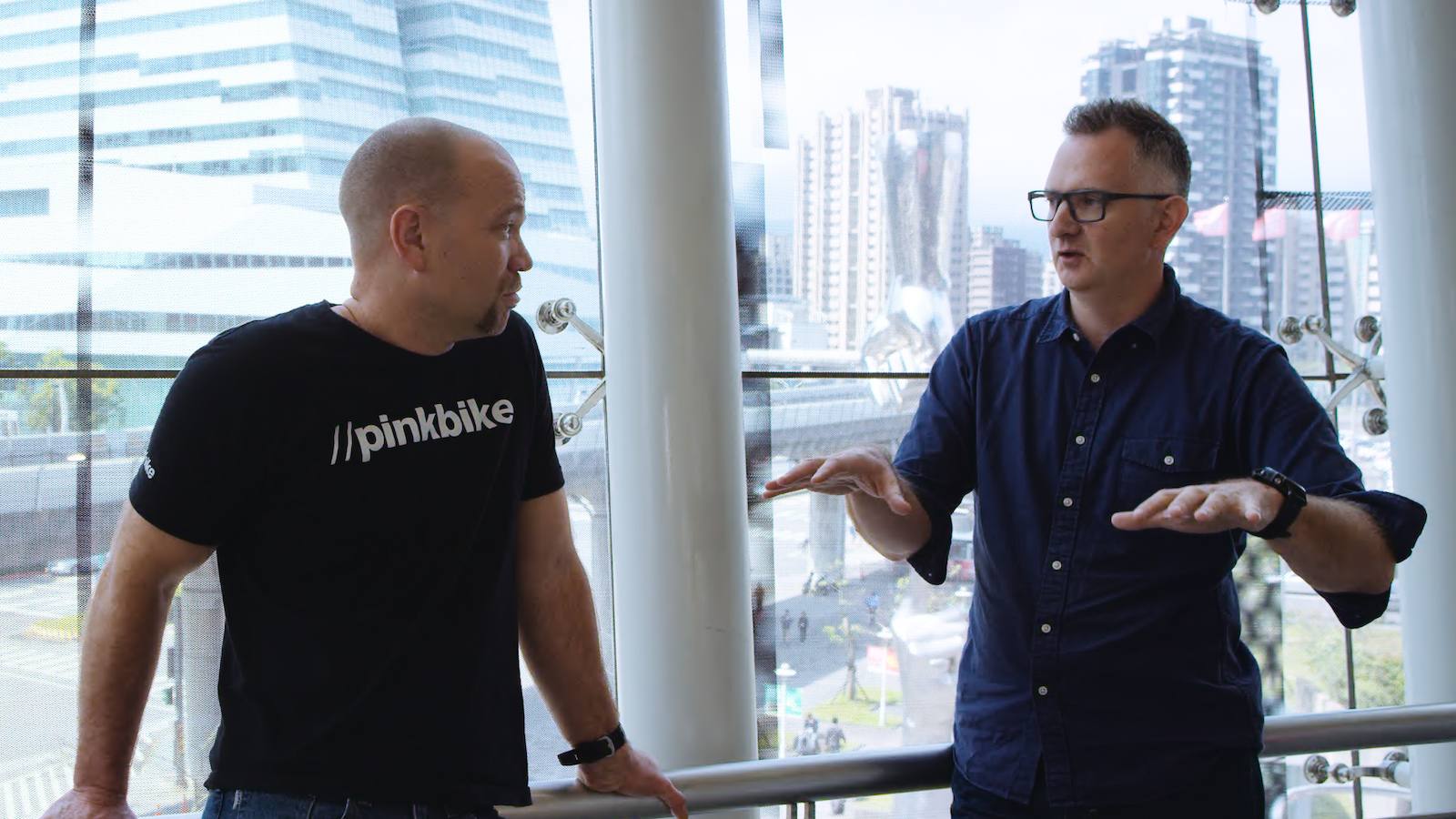
Engineer, Ryan Carroll, oversees quality control and manufacturing for Saracen. He's one of the growing number of Europeans and North Americans who live and work full time where the bikes are produced.
Enter
“The Fixer”
One way to minimize your risk of having the feces hit the factory fan is to hire somebody to oversee the bulk of your quality control. In the past decade, a number of engineers from Europe and North America have taken up permanent residence in China and Taiwan, doing precisely that kind of work. Oftentimes, they are people who’ve run bike brands in the past—people with an intimate knowledge of everything that can go wrong in the extremely long and complex chain of actions that produce a frame. Ryan Carroll is one of these engineers. I call Carroll a “fixer”, but he’s equal parts frame designer, brand representative and cultural attaché. Carroll has worked with a number of brands, including Saracen.
A big part of Ryan’s job is making sure every detail in the production process (and on the finished bike) is buttoned up. It’s a big job. A second language helps, but it’s not simply a matter of speaking Mandarin or a local dialect.
“I speak bike,” says Carroll, by which he means that after years spent in factories, he understands how the tooling, building process and company culture can all combine to prevent your bike frame from being the kind of reliable and thoroughly kick-ass product you dreamed it would be when you sketched it on the back of a napkin. Carroll and other fixers are there to prevent that from happening.
“The thing about building bikes in Asia, is that it all comes down to communication and trust. You asked me if some factories can make great bikes for one client and bikes that aren't nearly as good for other clients. Yeah, that happens sometimes and it can happen for a lot of reasons. And it may not because the factory was being shoddy. Maybe the way you drew up or engineered the bike doesn’t fit the factory’s way of making it. That happens all the time. The factory builds the frame one way and you are expecting it to be done another way, the interpretation of your drawing goes sideways and everything just falls apart.”
Like a lot of companies these days, Pivot Cycles has a full-time engineer living in Taiwan and running quality control for them. I ask Cocalis if that’s actually necessary. He’d just finished telling me how good the factory was.
Cocalis thinks about it for all of two seconds.
“Yes we do. I’m a little over the top on that, but my customers are also a little over the top. Everything needs to be perfect. Tolerances have to be tight. Alignment has to be perfect.”
But does it actually matter? Does it really make the bike better? Safer? Perform better on the trail?
“It does perform better because of that,” says Cocalis. “If every tolerance is held, if everything is done right, we get as close to perfection as we can,” says Cocalis. “I mean, at the end of the day, it’s just a mountain bike. It’s going to get the shit ridden out of it. It’s going to get dings, get beat up...but the longevity of the bike and how it rides over time is super important. For instance, when you have linkages that are not spot-on, shocks wear out earlier. I mean, there are things you can’t even see with the naked eye on a cheaper, assembled bike that will absolutely create problems over time. It doesn’t have to be that way, but there’s a lot of work that you have to do to make sure that doesn’t happen with your frames.”
Easier Said
Than Done
A few days later, passions severely deflated, we shuffled back on a flight to Vancouver. As I dug in for the long flight home, I thought about how to end this story. It made sense to loop back to the start.
Can you go to Taiwan and start a bike brand?
Absolutely. The advent of the Internet, the increasingly global nature of our world…it’s all perfectly aligned to allow you to order up all manner of made-in-Asia widgets. Hell, you can order a batch of bike frames off of Alibaba right now and sell them out of your garage.
Actually succeeding? Getting batches of bikes that live up to your consumers' standards? That’s a whole different story.
There are a million ways to screw this up. A million ways to underestimate your costs. Building bikes is, ultimately, a hell of a lot more complicated than actually building bikes. Are you up for spending a sizable chunk of every year in Taiwan or China? Are you game for learning a second language? Are you willing to devote your every waking hour to building relationships, developing a brand, orchestrating marketing campaigns, and nailing down the actual delivery and customer service end of owning a bike company? Make no mistake—that’s all part of the process…and I’m undoubtedly leaving out a towering pile of crap that you’d still have to hop scotch.
So, yes, you can do this. But buyer beware.
Author Info:
Must Read This Week
Sign Up for the Pinkbike Newsletter - All the Biggest, Most Interesting Stories in your Inbox
PB Newsletter Signup
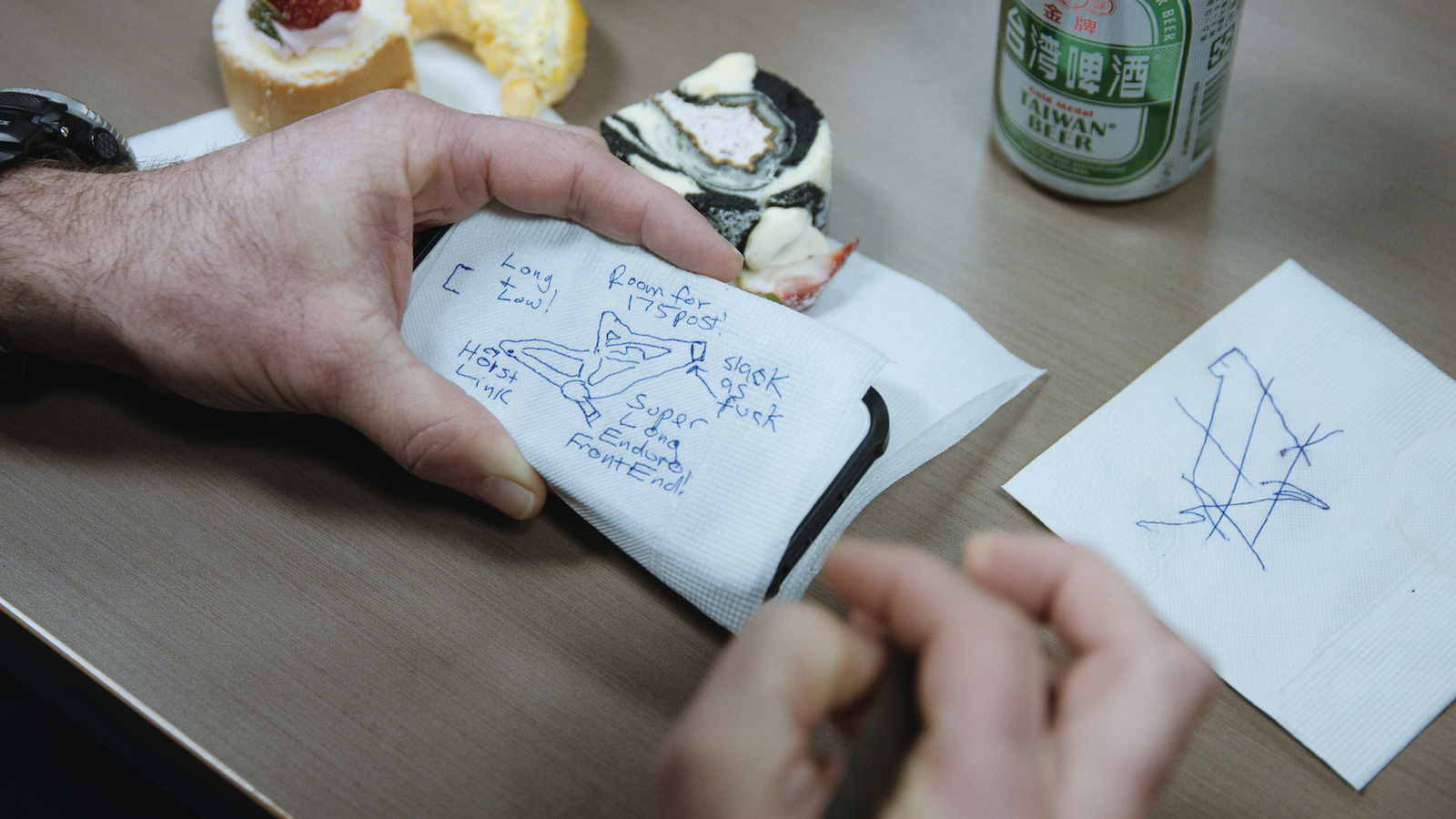





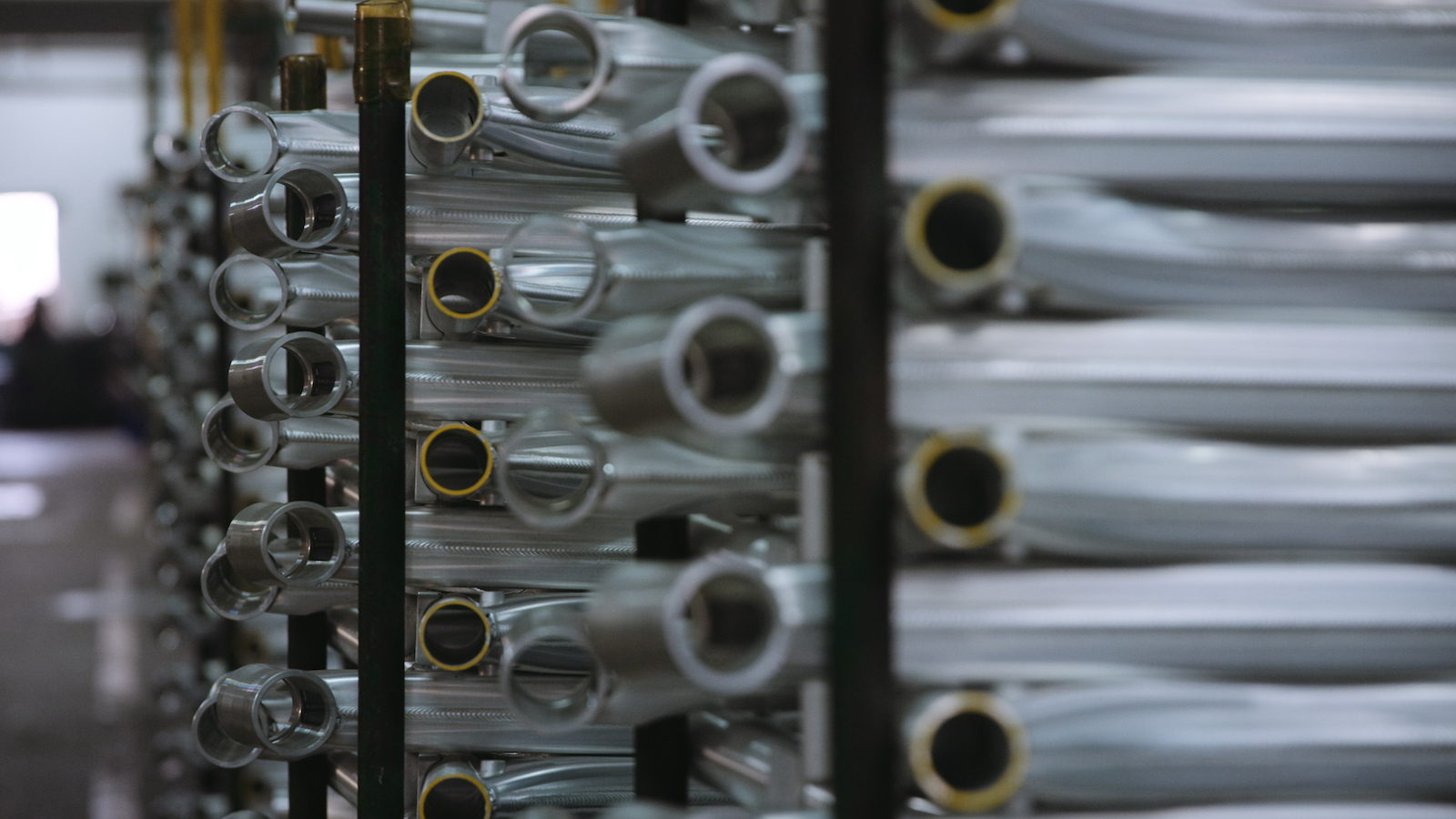
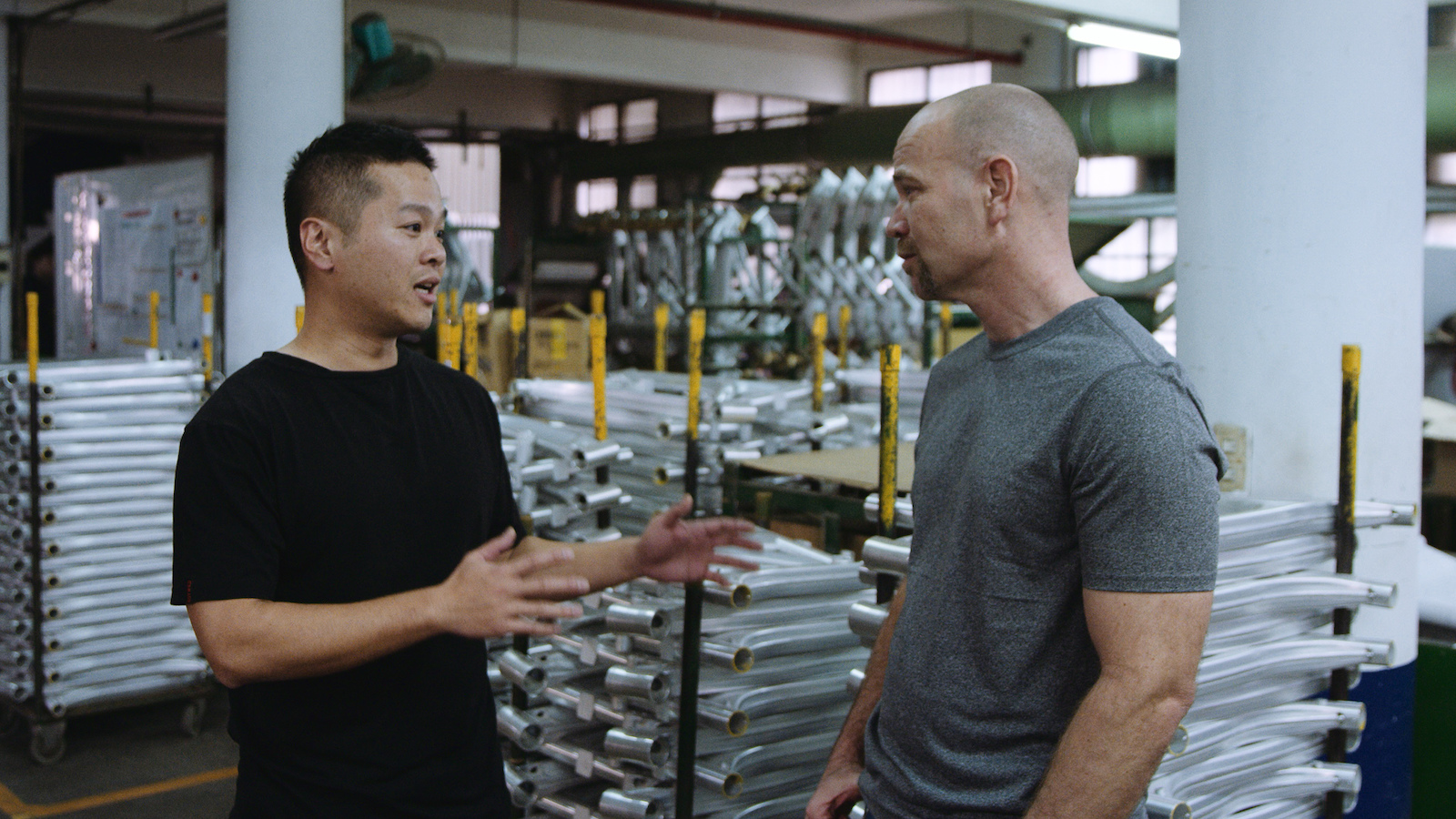
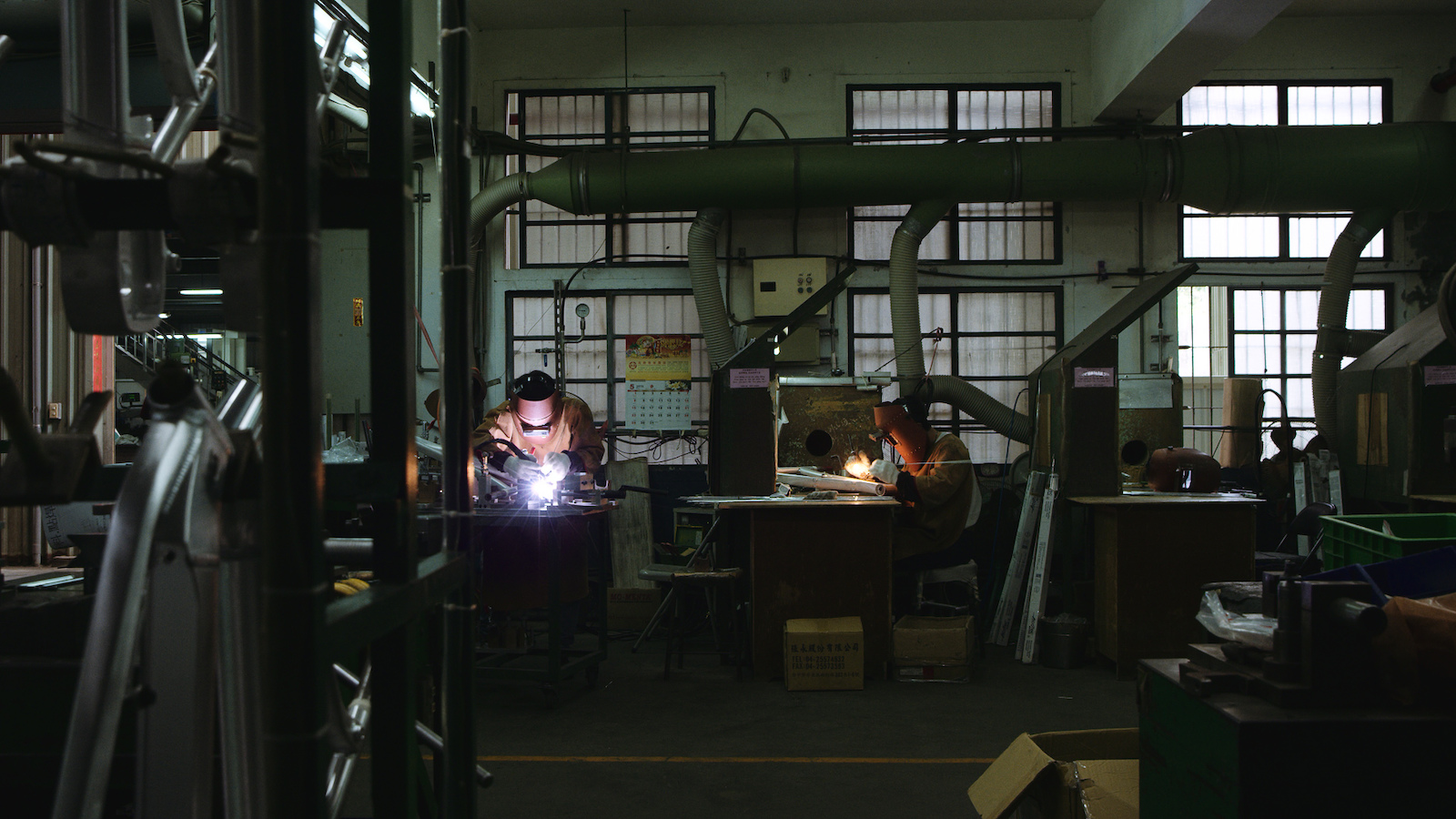
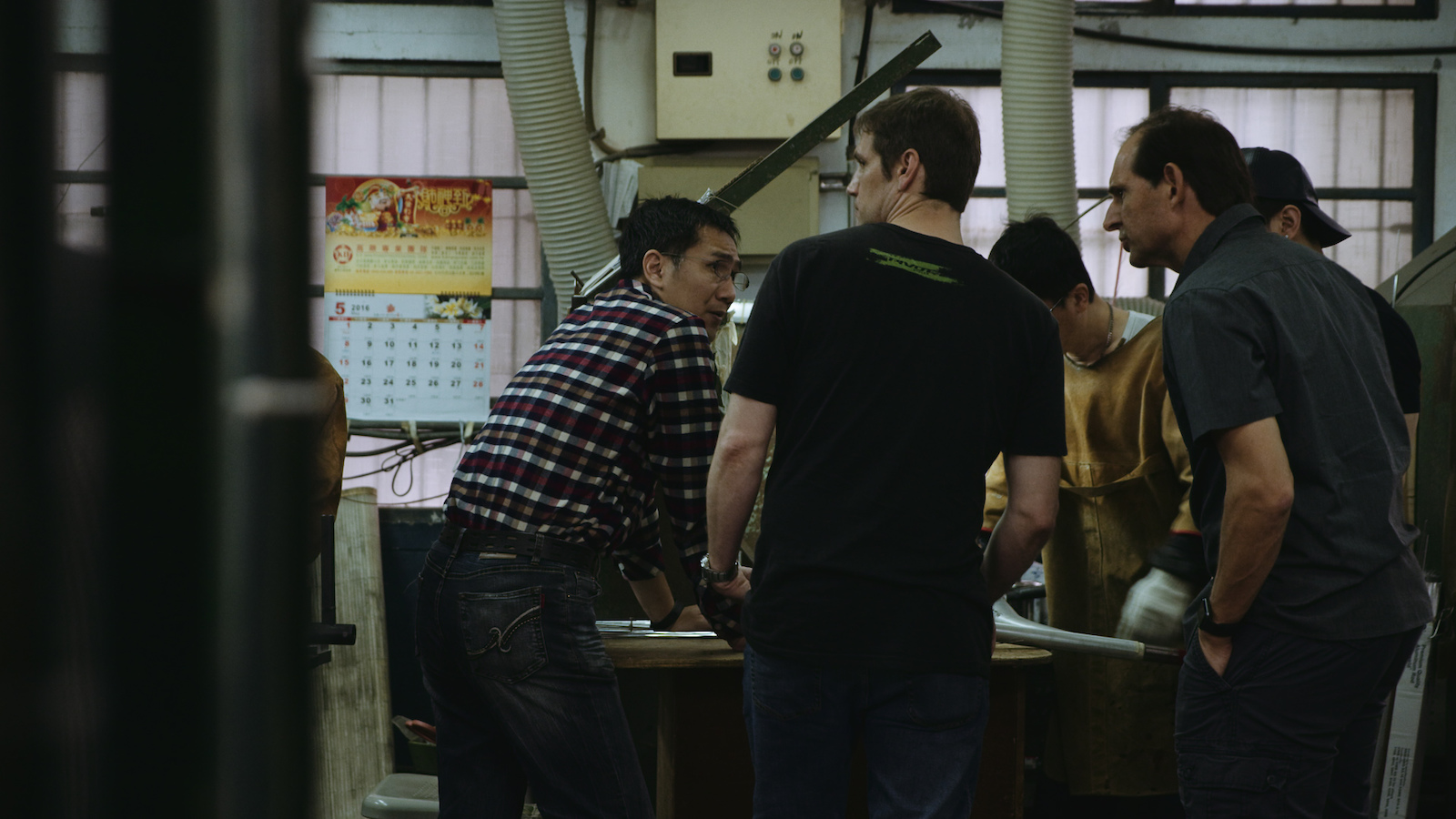
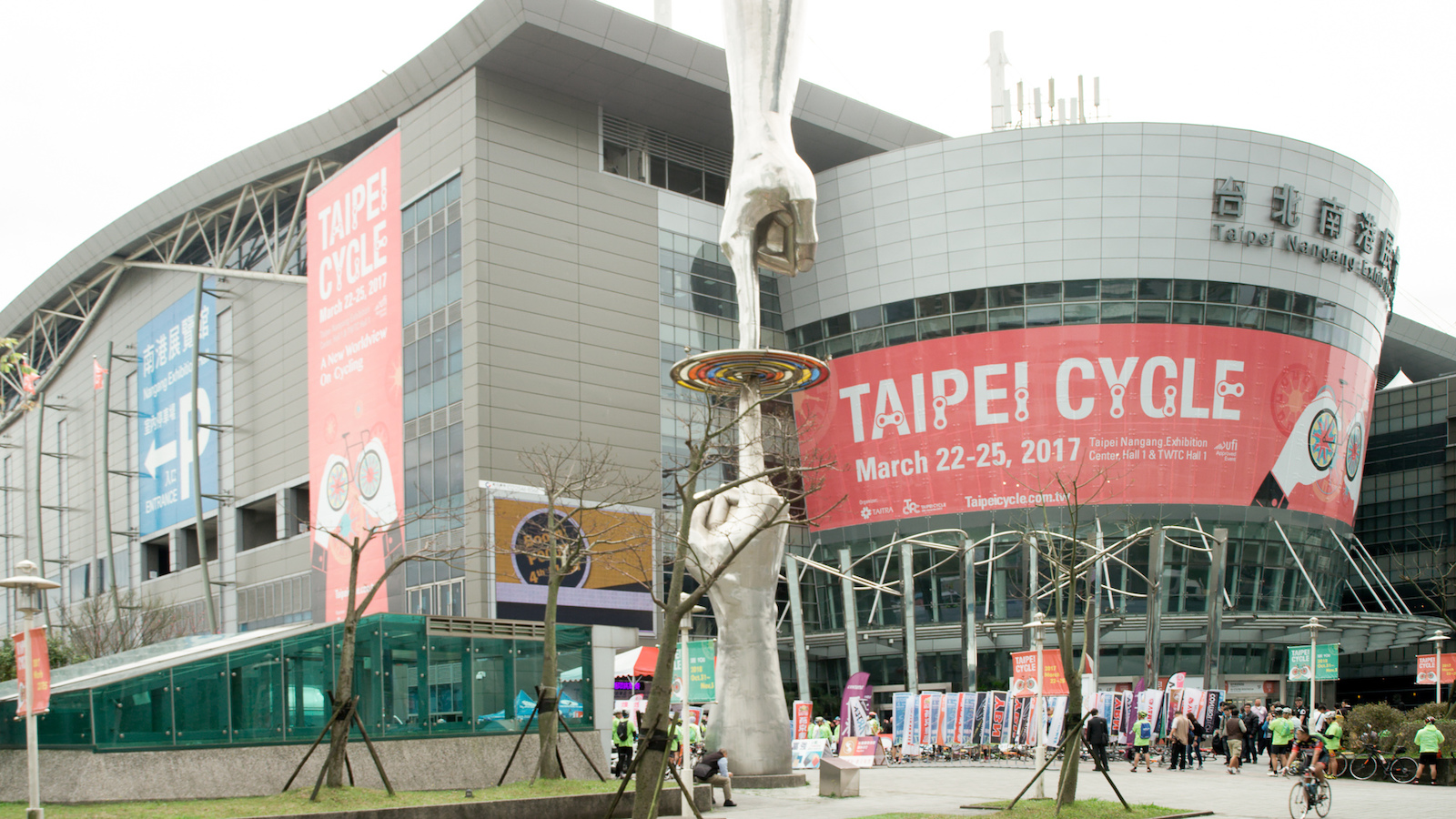
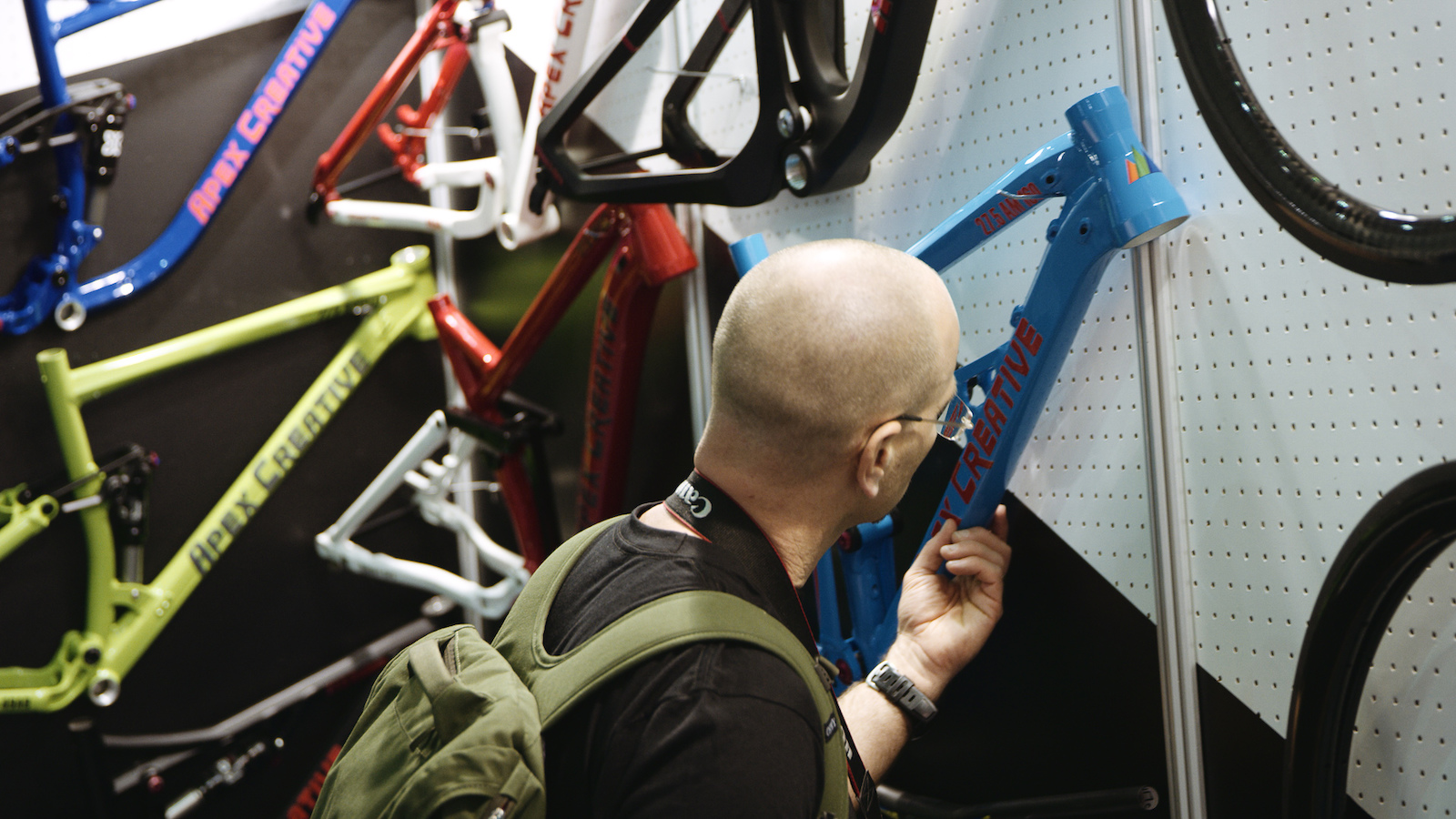
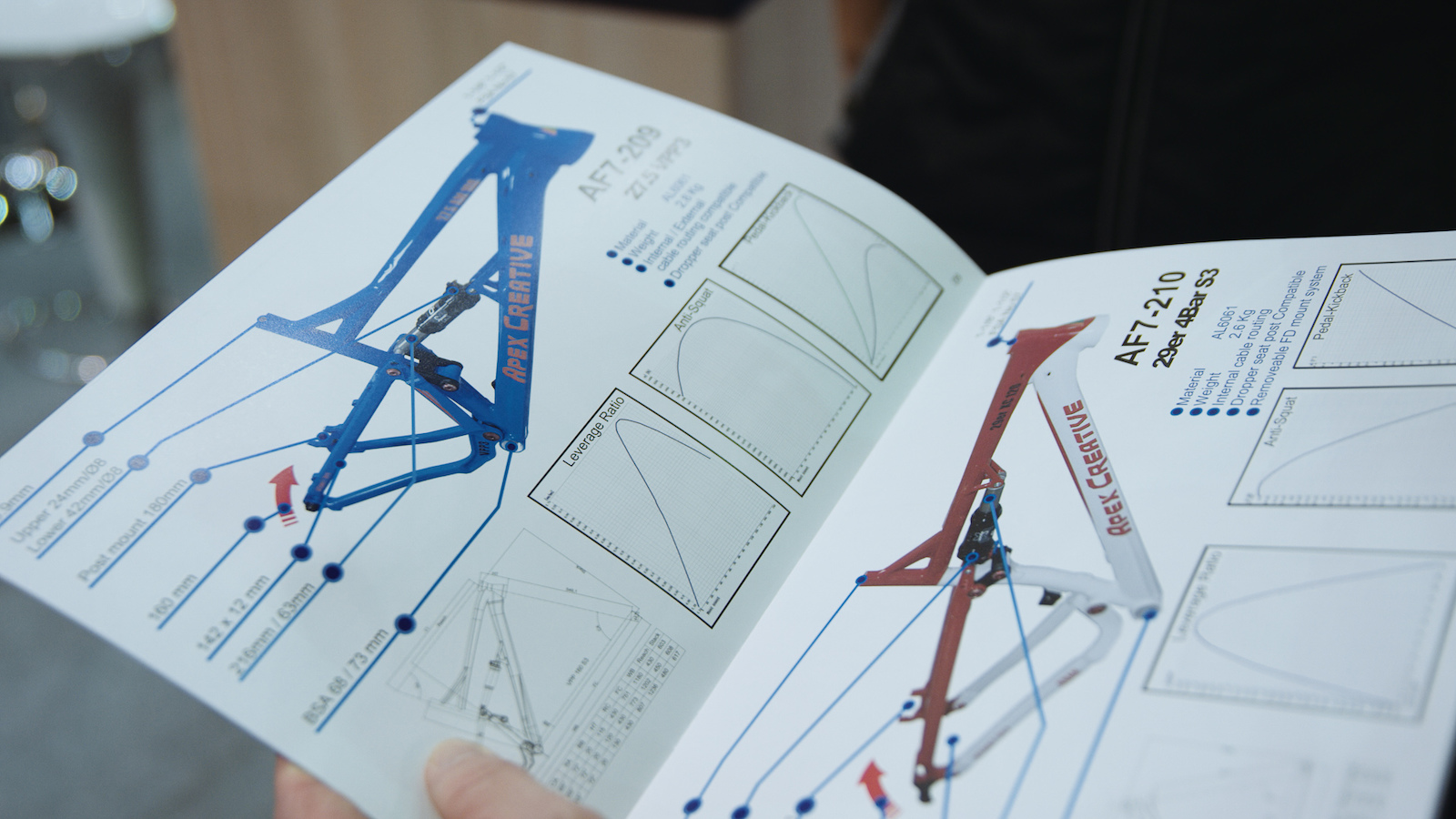
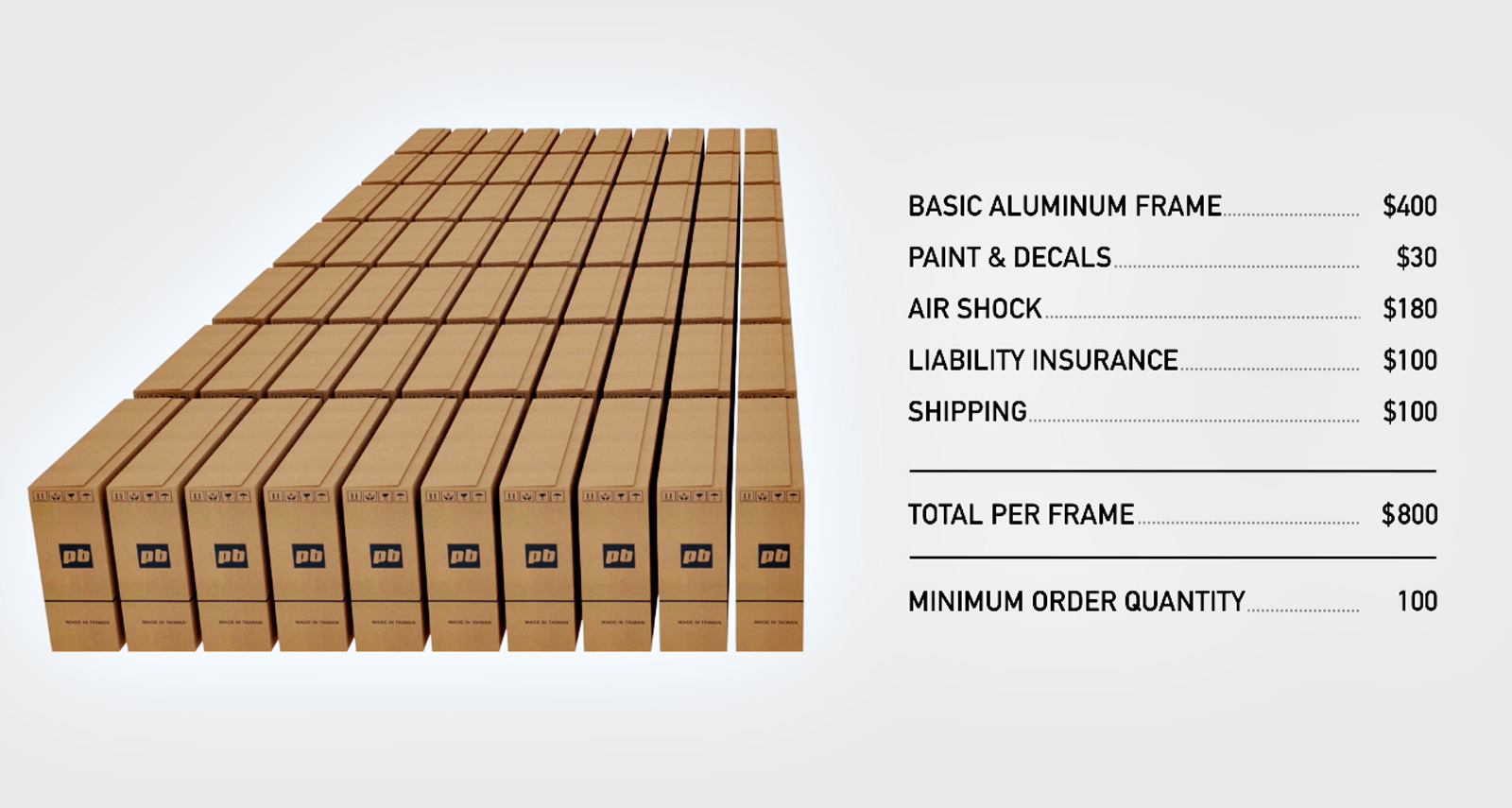
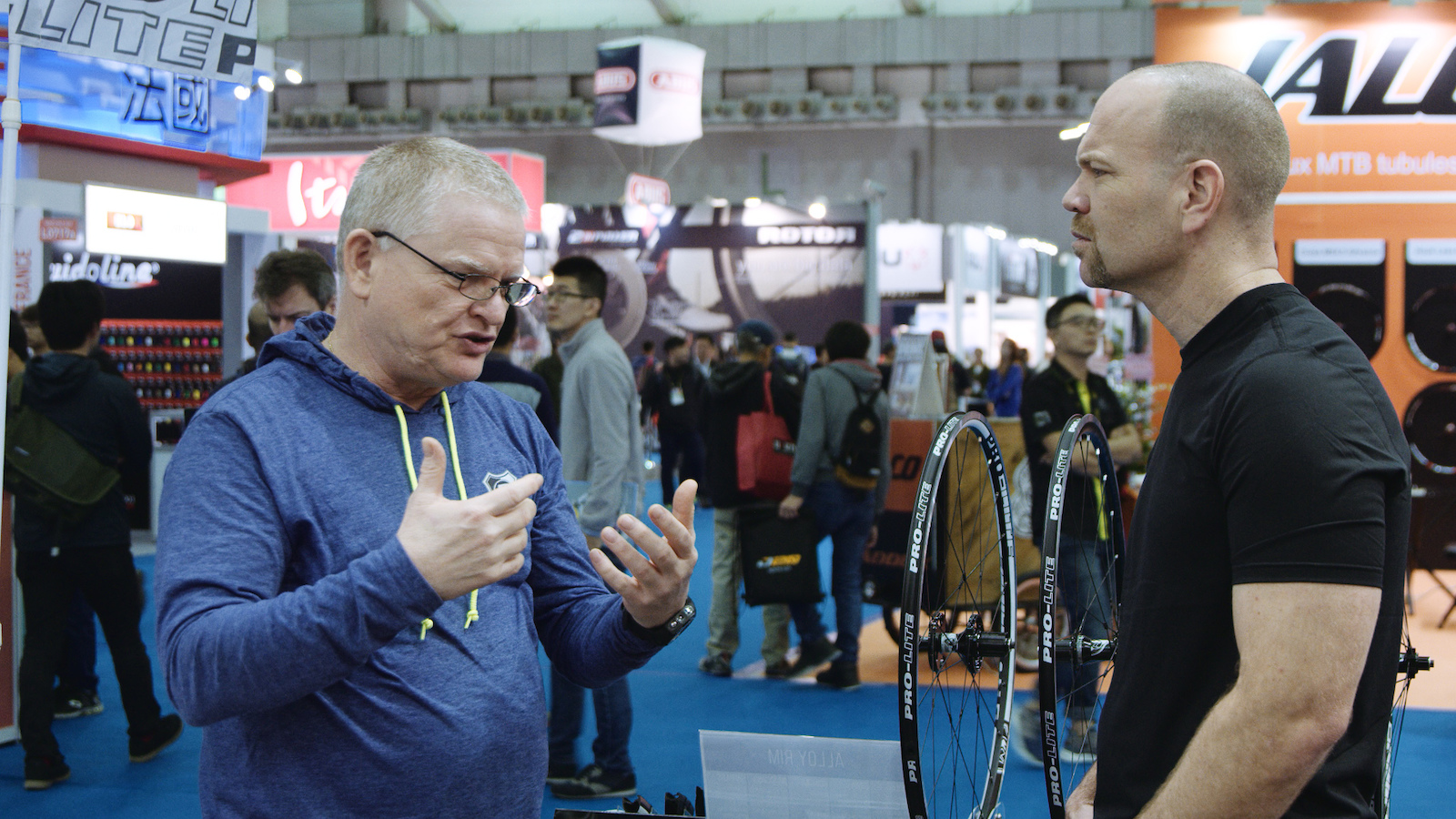

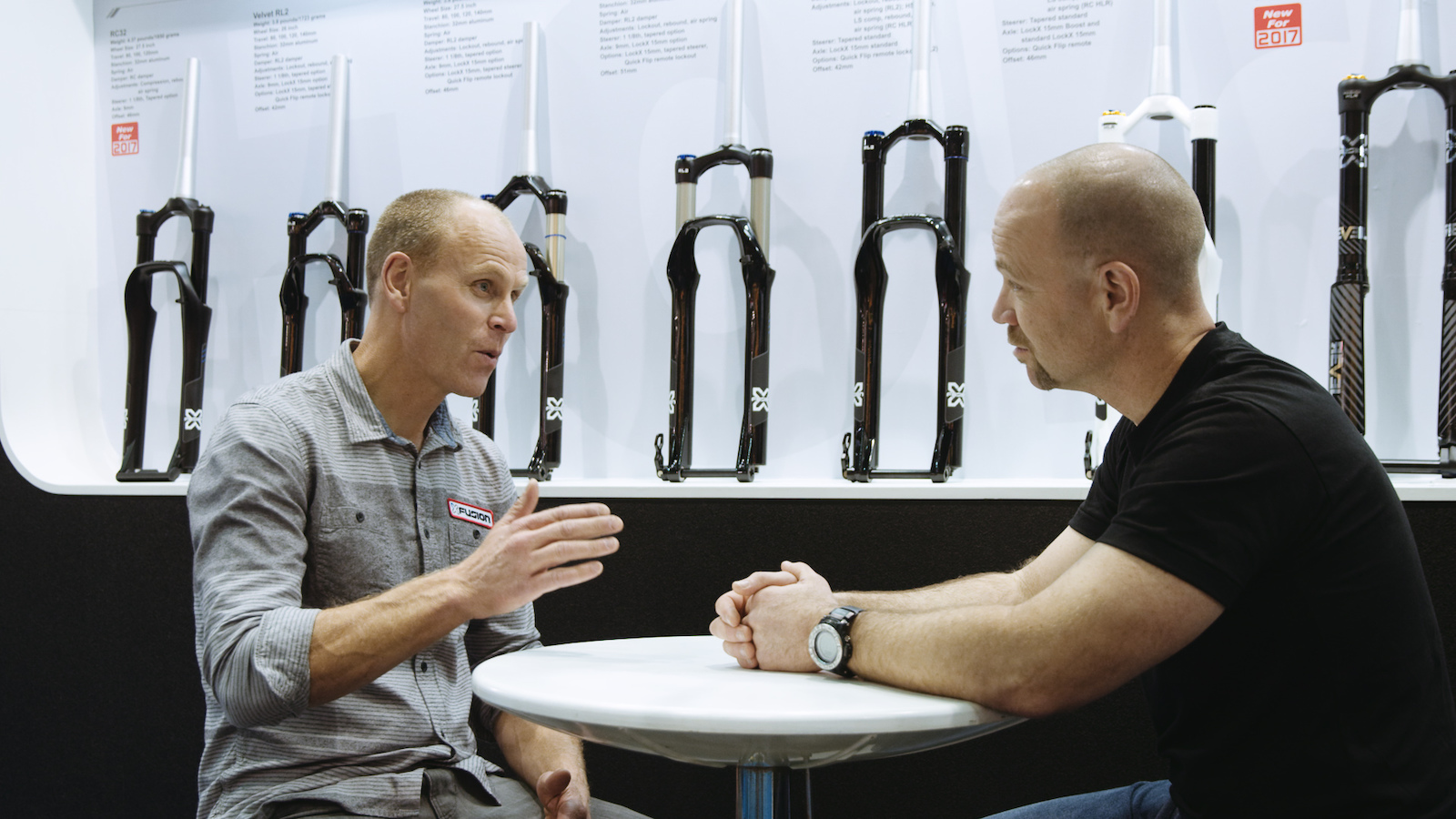
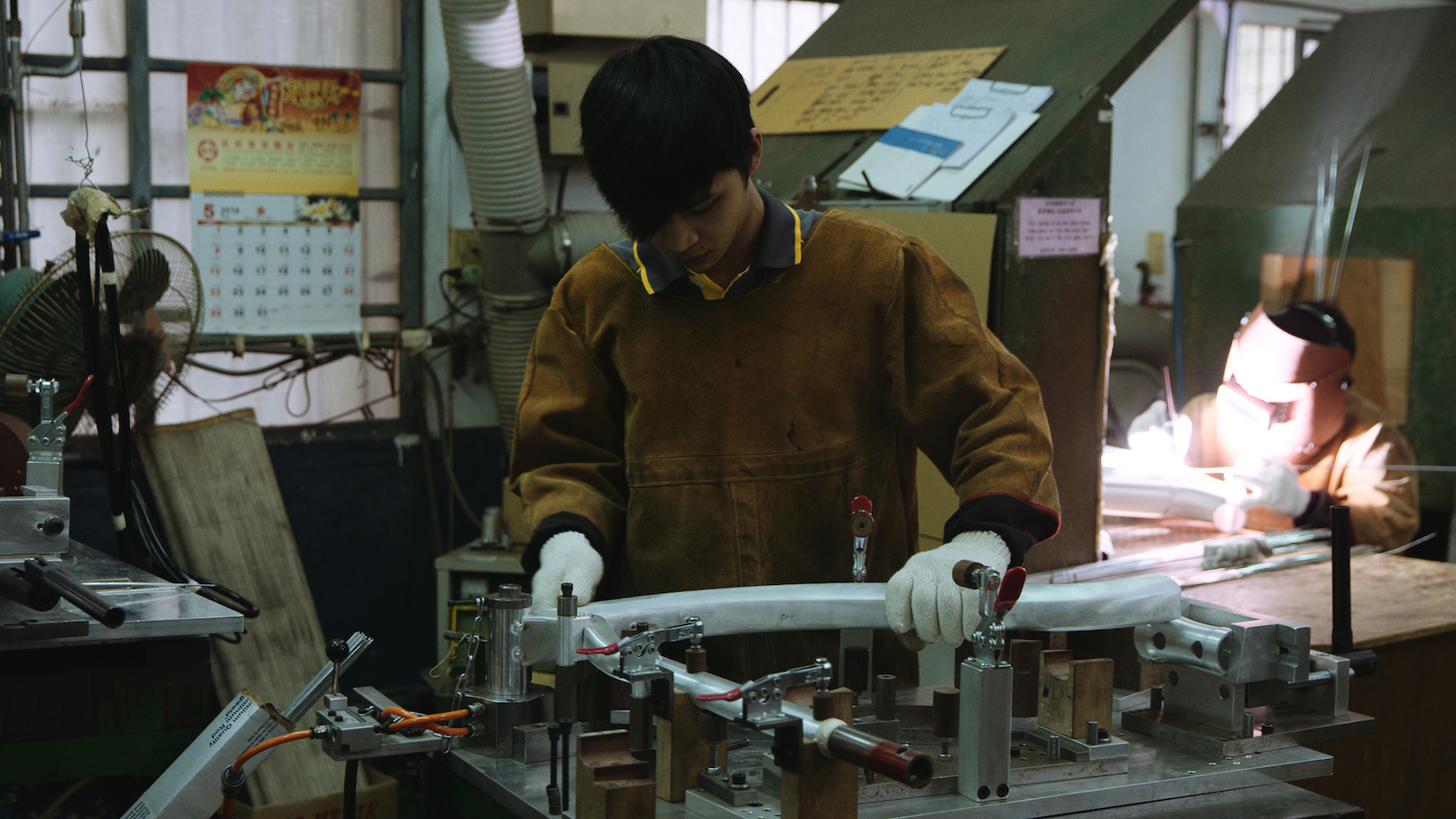


We've been told that carbon frames are harder to produce and that justifies the significant price difference - BUT - turns out they only cost $300 more than aluminum frames and you only have to buy 30 of them per order. SO, please explain why a bike with less overhead and only costs $300 more to make, ends up costing $3,000.00 more than it's aluminum counterpart "because it's carbon" when it hits the shelves.
::crickets::
Keeping the same margins on a frame that is that much more expensive, means the bike will be more costly to the consumer as well. No curtains being pulled back really...more costly process means more expensive consumer product.
You initially pay for two framesets, but you have only one.
Go ahead and put random substances in your drug that haven't been tested and researched, and let me know how that works out for you. There are a lot more costs than merely production.
1. Because R&D
2. Because not all carbon is created equally and applied equally throughout the frame (lateral, torsional, etc rigidity)
3. Does $300 cost increase include the overhead of having your full time employee over there to represent your brand (like Pivot has as stated in the video above)?
4. Reason number four is on vacation.
5. Because lastly, and most importantly, it's what the market will bear.
That said, I'm looking forward to lower prices in the coming years.
"BUT - turns out they only cost $300 more than aluminum frames"
What makes something expensive to produce is the tooling. It's all about the tooling cost. Tooling (a mold) is a one time payment up front and it is a large large cost. For a frame made out of metal, there really is no tooling to "make." Just the alignment fixtures. For a carbon frame, you need a mold that is CNCed out of metal to the exact negative of the shape you're making. So yes, carbon frame are far far more expensive to produce. But go to a catalog company that has already made thousands of frames from that carbon mold and recouped their tooling cost, then yes, BUYING a carbon frame will cost you $300 more than the aluminum counter part.
And let's be 100% honest here - the companies you're referring to are not catalog companies - they 1 off frames designed in-house by their engineering/design/R&D teams
I work A LOT in plastics. A plastic part will be much cheaper for "piece price" than that same part made out of sheet metal or CNCed. But up front, plastic parts will start with somewhere between lets say $10k and $50k for your average mold (tooling) cost. That means you have to sell a whole hell of a lot of plastic parts to pay back that molding cost. Where as make it out of metal and there is $0 tooling cost so you can sell less. This same idea 100% applies to carbon frames vs metal frames.
@Milko3D:
not sure about Raleigh, Ridgeback or Saracen now
@dubod22: that's pushing it a little. Whyte doesn't make them in house, it says it on their site.
Cotic are made in Taiwan, says so on their website.
Can't be bothered checking the rest now, but chances are they are also outsourced.
Orange are a little vague on their website as to what's made where. And I don't have any other source so you might be right.
Sorry about BTR, only saw hardtails on their page. Didn't look for frames.
I think it's almost ready for sale now.
Some cool stuff going on indeed, if it's successful maybe I could buy a size S in alloy in a couple of years
youtu.be/mlIYEdRFQu4
Butted or straight gauge?
Great article @vernonfelton
And why is that? Grist for another article
PBers forget that high performance bikes are a tiny sliver of the global market. And that market shift has direct affect on our options.
Usually when you see a massive downturn of volume in a market the classic response is to seek higher value offerings that allow you to lose fewer dollars than units (ahem, new standards anyone?)
But the driver of volume declines is very curious. Lazy kids? Shift to fuel-driven transport in developing countries? Alternatives? What gives? Very curious to hear an analysts perspective on the global market.
So what do the Chinese bike manufacturers do? Crank out bikes cheaper... and cheaper... and cheaper.... Quality goes down, no one wants to buy bad quality, the cycle continues. The "high end" bike market is alive and well, but I would guess that only accounts for like 5% of bikes (bikes $500 or more). That would leave like 95% of bikes (sub-$500) that are being sold to an already saturated market.
For instance, if I lived in my hometown in Poland I would have a hard time visiting all bike parks in proximity of 3h drive within a year. The moment bike parks or trail centers have to compete for the client is the moment first world problems start... I may be stupid, but I also may simply be appreciating what I have. Why do we have to reach the moment where I eat more than I can chew? Well, when it comes to bike tech, we are already there. Big time. I don't need cheaper parts, I just don't. I just... I am just happy with the way it turned out.
Boutique brands will always popup/continue to fill the void, but they'll usually be more expensive than the player who created said void.
Less selection, lower quality, harder-to-find service... that's the fear that is borne from being a consumer in a shrinking market.
To your second question, volume and making up lost profit on other models. Giant is the world's #1 producer of bicycles and makes hundreds of thousands (if not millions) of more bikes than YT does. Their buying power is monstrous compared to YT's. If Giant only makes 30% profit at the low end of the spectrum, they balance it out on the high end where they make more money.
I don't think Giant is using the money they make selling high volume of entry level bike to compensate the "low margin" they make on high end bikes, it would make no sense. In theory, big company like giant would sell their low end bikes cheaper, but in higher volume which would compensate the decreased margins. But i don't see the reason why they would manage to sell high end bikes so much cheaper than Specialized ?
Now, this can vary from country to country, are the brands using a subsidiary or a distributor, etc. etc. It could be that in some instances Giant will be a better value than Specialized, but in USD Specialized is generally a good value at retail and not overpriced compared to other retail-oriented manufacturers.
10% of $100,000,000 is a lot more end profit that 50% of 1,000,000
Thanks for the entertaining and informative article!
I would love for manufacturers to slow down the release cycle and develop bikes that last longer!
Unfortunately it's not how the economy works...
For example you can shorten the offset a couple of millimeters or widen the rear hub a bit more or both at the same time, and then start an aggressive marketing campaign showing the massive advantages of your ideas. Shortening the offset has also drawbacks, but what the f*ck does it matter?
Please explain how? Do they use a time machine?
Hydroforming the tubes for one frame takes less than 5 minutes?
Cutting the tubes to length takes less than 5 minutes?
Placing the tubes in a jig and welding tubes takes less than 5 minutes?
Aligning the frame before heat treatment takes less than 5 minutes?
QA takes less than 5 minutes?
Maybe it is possible to apply the decals in less than 5 minutes!
Did you meant that they release a frame every 5 minutes, not that it takes 5 minutes TOTAL per frame?
Probably 45 days from the time they start working on the order to the time the first frame is complete.
This is one of the huge pitfalls of the large amount of brands within the bike industry - If there were only 3 large brands, like in motocross we could all be riding top end bikes for 1/3rd of the cost due to economies of scale - A £2000 alloy DH frame could cost £300, literally.
A factory like this can make an alloy frame in 5 mins, it will probably be perfectly welded and aligned but it is useless for making small runs of 100 frames or so, you would need to make thousands of the same to make setup worthwile.
Why dont you read up before going out of your way to disprove what somebody else is saying?
www.bike-eu.com/home/nieuws/2016/7/portuguese-alloy-frame-maker-triangles-starts-slowly-in-october-10126858
Supposedly production will start on May 2018. So far all we have is their claims. I'll believe it when I see it. They don't even have a complete web site. triangles.pt
Also the articles show only hardtail frames, which are easier and faster to make than FS frames.
I am somewhat familiar with mass production techniques. I don't know how they calculated their claimed 5 minutes figure, but I would be very surprised if they will be able to show a 5 minutes unedited (except paint and heat treatment) video showing raw materials turned into a complete frame.
Quite the opposite from wanting to disprove their claims, I would love to see proof that they are true.
Only in the bike industry are the consumer in the belief that they are more knowlegable than the manufacturer, I had a similar response to the last thread when I posted an absolute concrete fact and everybody spend the next 10 replies trying to discredit it, I have no idea why - Go and stick your head back up in the clouds.
Why should I back up what a company nothing to do with me is saying? I am just taking things from the article, I'm not pushing my opinion on anyone like you a*sholes.
Agueda bike park opens this summer too, worth a trip!
've been there once to see, i normaly go and ride to Ladário, near sever de vouga, and one day i went to see it
This equates to a VERY small percentage of the overall price (as the components, marketing, shipping, etc. etc. are all fixed prices irrelevant of frame material).
YET the $$$$ between the two versions of bikes on the showroom floor at MRSP are DRASTICALLY different.
IF the costs of carbon frame vs aluminum are only a few hundred dollars different to manufacture, then why a few thousand on the floor when everything else is fixed ?
The next guy I ride with who says, "Man, this bike has a lot of anti-squat" is going to get the I-know-a-lot-about-bikes crap kicked out of him.
If you choose to put the cart before the horse.......
hey that 'such and such' Brand'.
Then I think,
"I'm not going to buy one of them now".
Lol
Lol
Lol
www.frankthewelder.com
To the other "Journalists/writers"on Pinkbike - this is how it's done.
Fenton !! Fenton !! Fenton !! Oh Jesus Christ !!
PBers forget that high performance bikes are a tiny sliver of the global market. And that market shift has direct affect on our options.
Usually when you see a massive downturn of volume in a market the classic response is to seek higher value offerings that allow you to lose fewer dollars than units (ahem, new standards anyone?)
But the driver of volume declines is very curious. Lazy kids? Shift to fuel-driven transport in developing countries? Alternatives? What gives? Very curious to hear an analysts perspective on the global market.
Now if only I could delete/edit a comment...
www.wheelgiant.com.tw/ebook/en_etbs.html